Dig a Little Deeper: More Everest Facts
Delve into these facts about the highest peak on Earth. Check out some fast facts or dig a little deeper. Discover how Mount Everest got its name, what kind of rock is on top, and how it's getting taller every year.
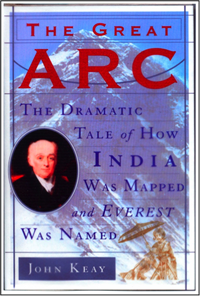
The Great Trigonometric Survey of British India, spanning several decades during the
19th century, identified "a stupendous snowy mass" through surveying instruments from
above the hill resort of Darjeeling, over 140 miles away. Read more about the naming of Everest.
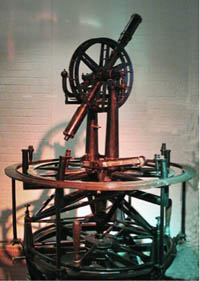
The widely accepted elevation of Qomolangma (Mount Everest) is reported to be 29,035
ft. (8,850 m). The first unofficial elevation of Qomolangma was reported to be 30,200
ft. by James Nicholson of the Great Trigonometric Survey of British India (ca. 1849-50),
but this measurement was based on raw theodolite surveying data and did not account
for optical aberrations. Read more about the elevation of Everest..

The national flag of Nepal is the world's only national flag that is non-quadrilateral
in shape. The flag is a simplified combination of two single pennons, the vexillological
word for a pennant. Read more about the flag of Nepal.
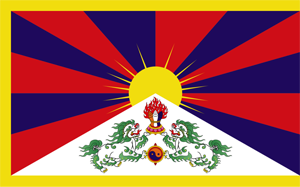
The Tibetan flag, also known as the "snow lion flag" and the "Free Tibet flag," was
a flag of the military of Tibet, introduced by the 13th Dalai Lama in 1912 and used
in the same capacity until 1959. Read more about the flag of Tibet..
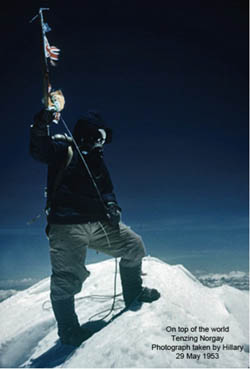
Sherpa is an ethnic group of people living in the Khumbu region of the Himalaya. In
Tibetan, shar means East; pa is a suffix meaning 'people': hence the word sharpa or
Sherpa. Read more about Sherpas..
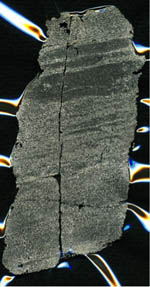
The summit of Mount Everest was actually the seafloor 470 million years ago! That's
right, the rock that comprises the "summit pyramid" or uppermost part of Mount Everest
is gray limestone that was deposited on the northern continental shelf of northern
India during the early to middle Ordovician Period of the Paleozoic Era, long before
India began its northward journey towards Eurasia and the eventual collision of tectonic
plates that uplifted the Himalaya and Tibetan Plateau. Read more about summit limestone.






